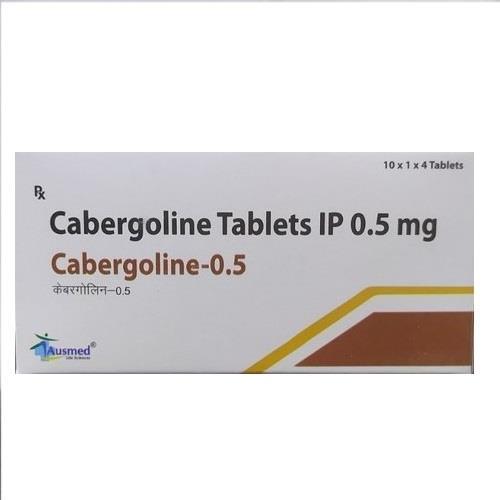Introduction
Prolactin, a hormone primarily associated with lactation, plays a crucial role in various physiological functions, including reproductive health and metabolism. However, when prolactin levels rise excessively, it can lead to various health complications, such as infertility, irregular menstruation, and even bone loss. Cabergoline, a dopamine receptor agonist, has emerged as a frontline treatment for hyperprolactinemia, offering significant benefits in managing this condition. This article delves into the mechanism of action, therapeutic efficacy, and safety profile of Cabergoline 0.5 mg in the treatment of high prolactin levels.
Understanding Hyperprolactinemia
Hyperprolactinemia refers to elevated levels of prolactin in the blood, often caused by factors such as pituitary tumors, medication side effects, hypothyroidism, or chronic kidney disease. Symptoms of hyperprolactinemia vary, ranging from infertility and irregular menstruation in women to erectile dysfunction and decreased libido in men. Additionally, individuals with hyperprolactinemia may experience galactorrhea (abnormal lactation), headaches, and visual disturbances.
Role of Cabergoline in Hyperprolactinemia
Cabergoline belongs to a class of drugs known as dopamine receptor agonists. It works by stimulating dopamine receptors in the brain, thereby inhibiting the secretion of prolactin from the pituitary gland. Unlike older medications such as bromocriptine, cabergoline has a longer half-life and can be administered less frequently, usually once or twice a week. This makes it a more convenient and effective option for managing hyperprolactinemia.
Mechanism of Action
Cabergoline acts primarily on dopamine receptors, particularly the D2 receptors, located on lactotroph cells in the anterior pituitary gland. By binding to these receptors, cabergoline inhibits the secretion of prolactin, thereby reducing circulating prolactin levels in the blood. This normalization of prolactin levels helps alleviate symptoms associated with hyperprolactinemia and restores reproductive function in affected individuals.
Efficacy in Clinical Trials
Clinical trials have demonstrated the efficacy of cabergoline in the treatment of hyperprolactinemia. Studies have shown that cabergoline effectively reduces prolactin levels in the majority of patients, with normalization achieved in a significant proportion of cases. Furthermore, cabergoline has been found to improve symptoms such as infertility, menstrual irregularities, and galactorrhea, leading to improved quality of life for patients.
Safety Profile
Cabergoline is generally well-tolerated, with few adverse effects reported. The most common side effects include nausea, headache, dizziness, and fatigue, although these are usually mild and transient. In rare cases, cabergoline may cause more serious adverse effects such as hypotension, hallucinations, or valvular heart disease. However, the risk of these complications appears to be low, especially when cabergoline is used at lower doses for the treatment of hyperprolactinemia.
Long-Term Management
For many patients with hyperprolactinemia, cabergoline represents a long-term treatment option. Once prolactin levels have been normalized and symptoms have improved, patients may continue taking cabergoline at a lower maintenance dose to prevent recurrence of hyperprolactinemia. Regular monitoring of prolactin levels and clinical symptoms is essential to ensure the ongoing effectiveness and safety of cabergoline therapy.
Conclusion
Cabergoline 0.5 mg is a highly effective and well-tolerated medication for the treatment of hyperprolactinemia. By targeting dopamine receptors in the brain, cabergoline helps normalize prolactin levels, alleviate symptoms, and restore reproductive function in affected individuals. While generally safe, cabergoline should be used under the supervision of a healthcare provider, with regular monitoring to ensure optimal outcomes. With its proven efficacy and favorable safety profile, cabergoline represents a significant advancement in the management of hyperprolactinemia, offering hope and improved quality of life for patients affected by this condition.





